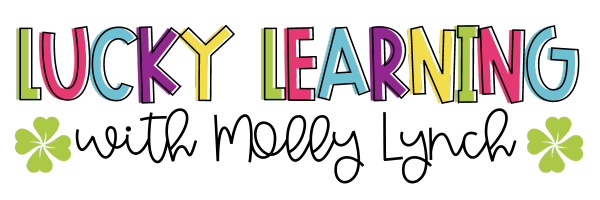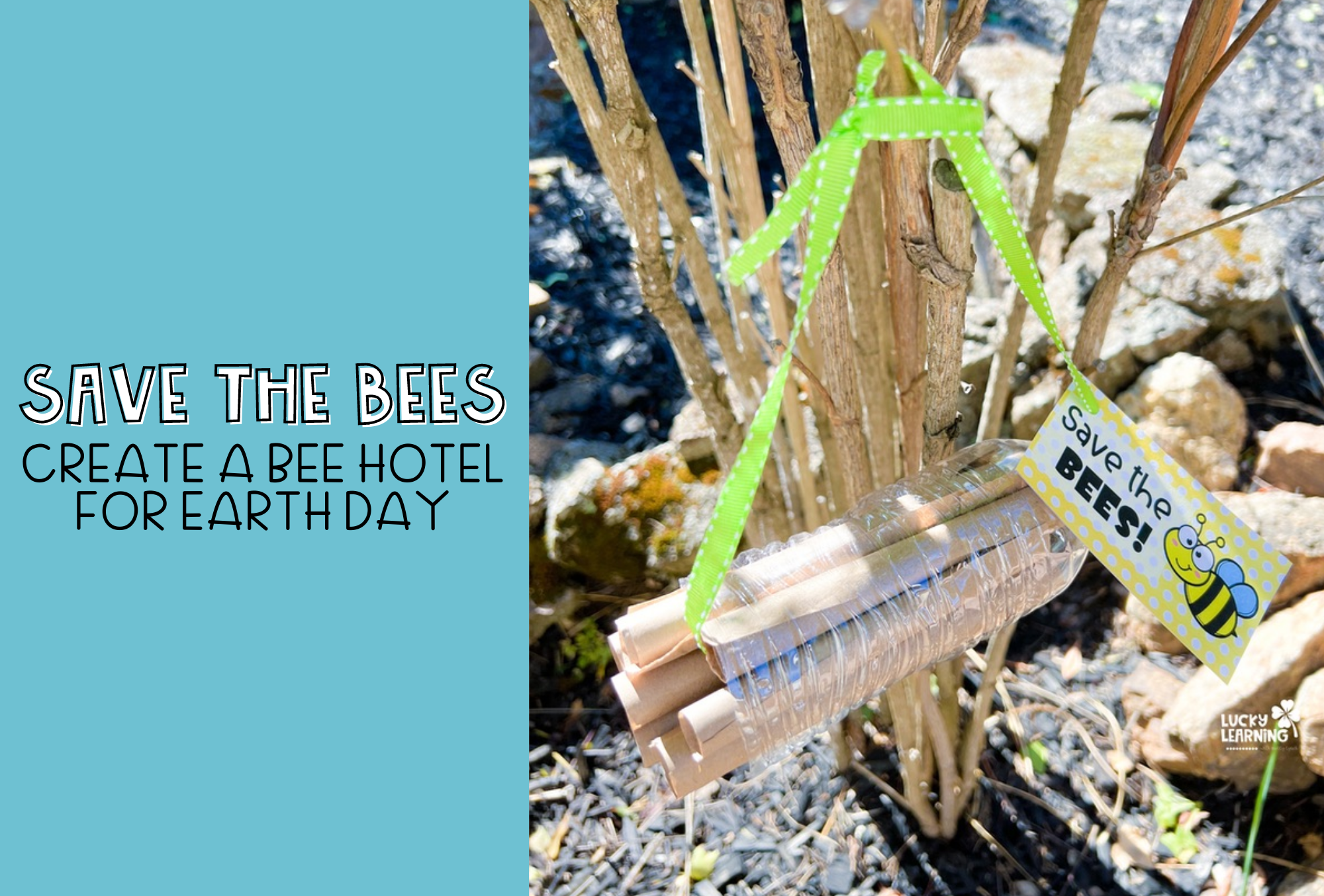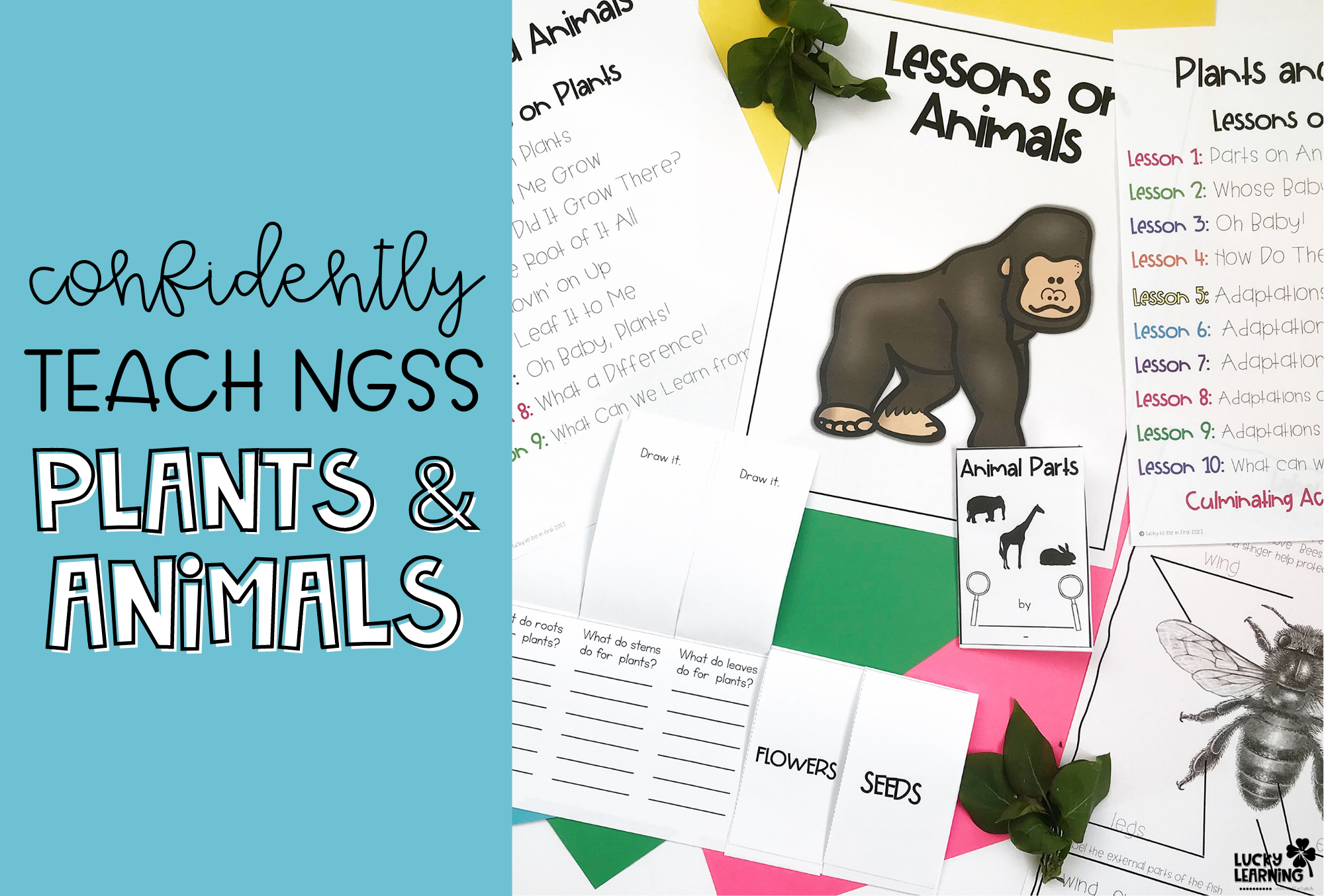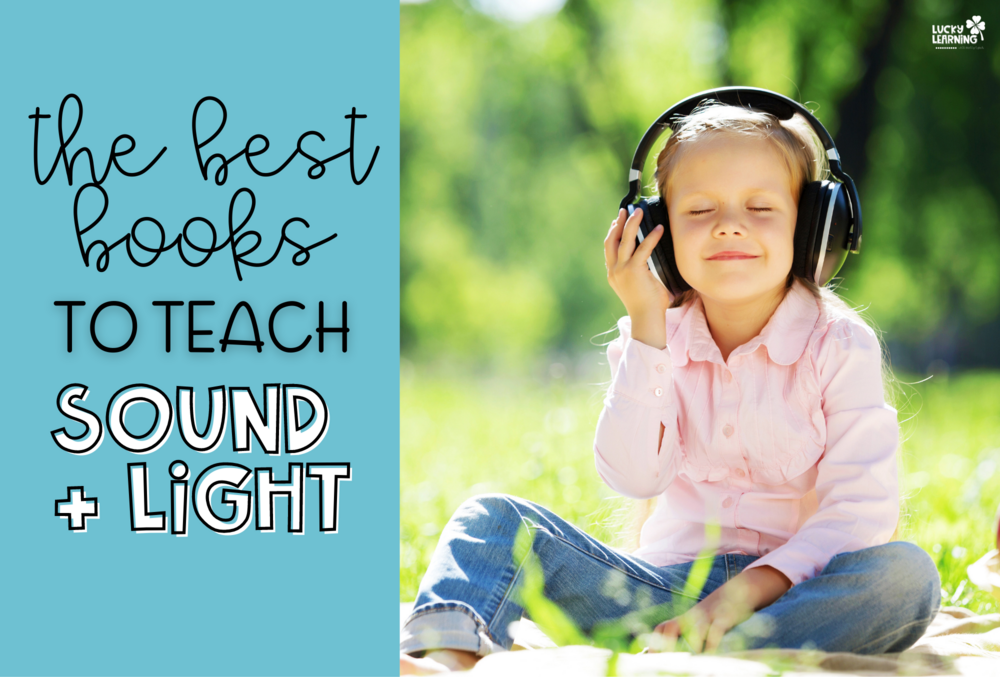Truth time: when I first started teaching, Science was my least favorite subject to teach! I hated the mess that it took to get Science lessons up and going. But seeing the excitement on kids’ faces while doing the experiments made me realize it is TOTALLY worth the mess and hassle to get things going!
So while I completely agree that Science is not the easiest subject to teach in first grade {the mess, the standards, etc.}. I believe it is SO important for all learners to get excited about learning the science standards.
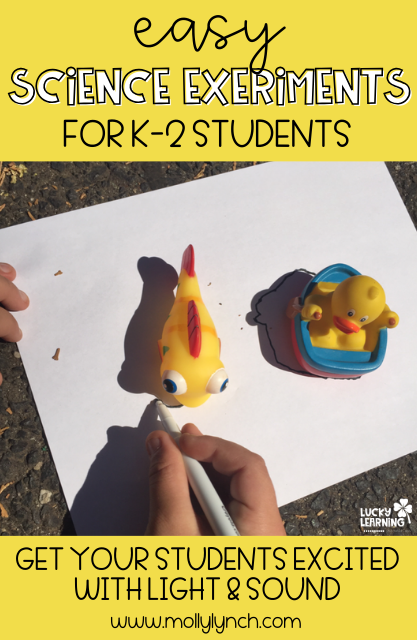
Of course, with the right experiments and approach, it can be fun for kids and teachers. Here are some easy science experiments for K-2 students to try in your classroom.
Sound Experiments
One of the first Next Generation Science Standards (NGSS) is all about sound waves. Sound is everywhere, and it’s fascinating to investigate easy science experiments involving all things sound.
Sound Hunt
First, take your students outside and let them explore the environment. Give them some time to listen and record the sounds they hear.

They can then fill out a mini-book and add their observations to a poster. Overall, this easy science experiment helps them realize that sound is all around us.
Sounds and Instruments
Next, get your students excited about sound waves with instruments. First, introduce your students to the kazoo. It’s a simple instrument that can help them understand how sound is produced and how sound waves work.
They’ll love the fun sounds they can make! In addition, create other instruments to explore sound. Using a simple hanger, your students can explore how sound moves through different materials. It’s my favorite hands-on way to demonstrate sound waves and vibrations.
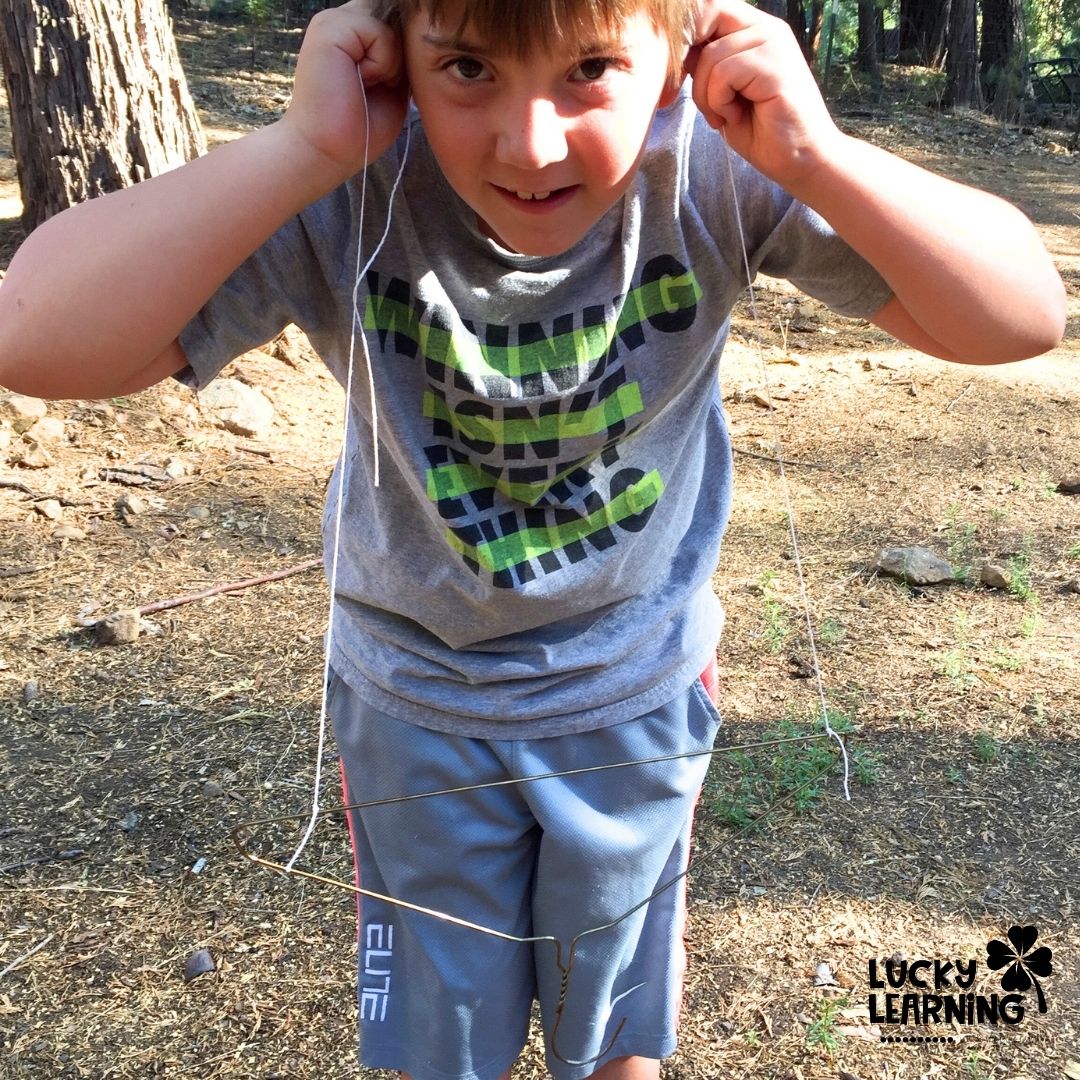
Of course, these and many more sound experiments are ready-to-use in my sounds & light investigative unit!
Light Experiments
Along with sound, light is an NGSS for first grade. So many easy science experiments help your students learn about light!
Exploring Light with Materials
I love using flashlights for light easy science experiments! Get some inexpensive flashlights and different cups, and your students can investigate how light reacts with various materials. They’ll discover how light behaves with transparent, opaque, and translucent objects. Instructions and student handouts are complete in my sounds & light investigative unit.
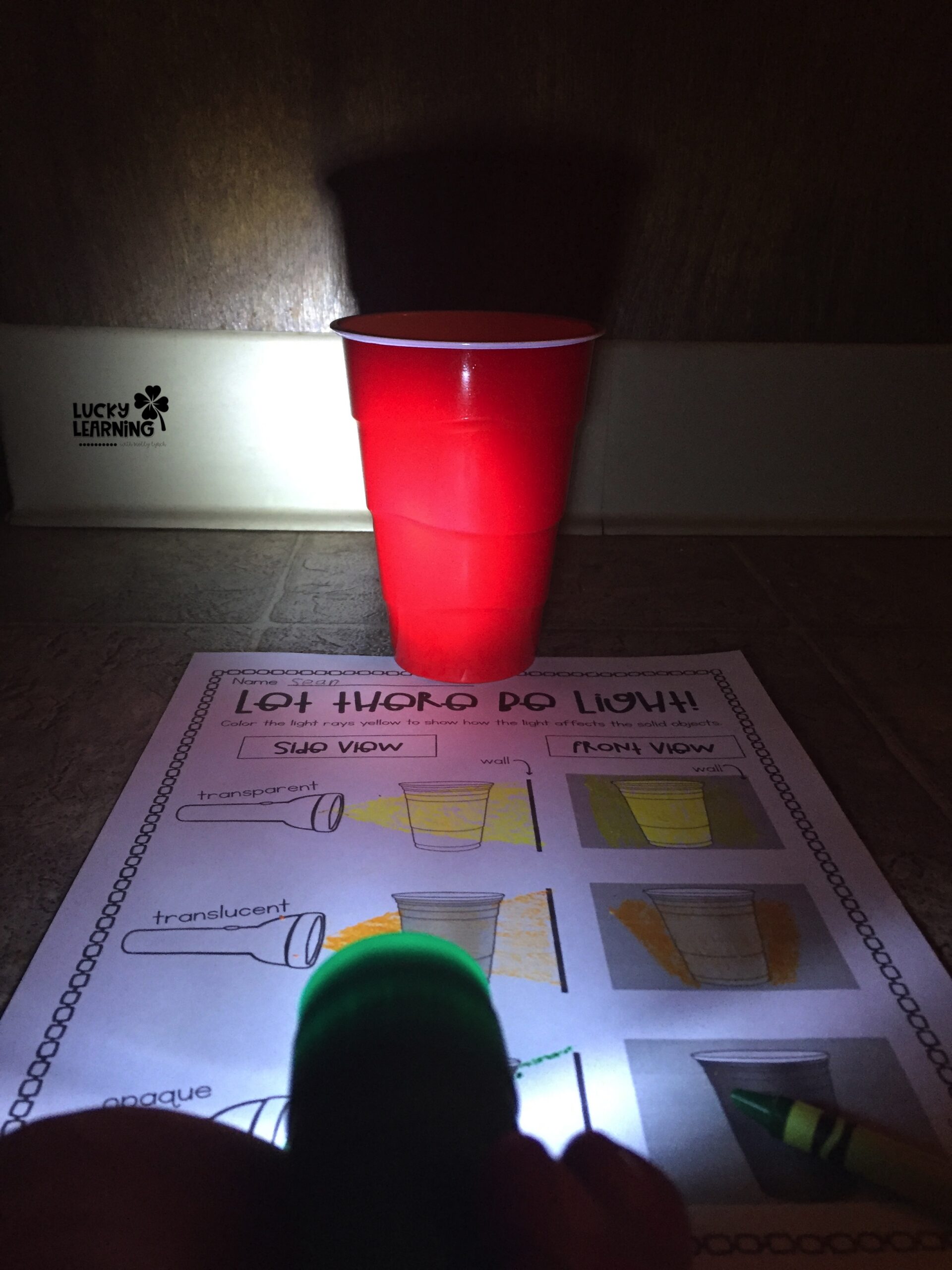
Eye Tricks with Refraction
Another easy science experiment in the sounds & light investigative unit is all about refraction. Kids love magic tricks, and this experiment will surely be a hit!
Let them explore how refraction works using simple materials like water and colored pictures. Finally, it’s a great way to demonstrate how light bends when it passes through different mediums.
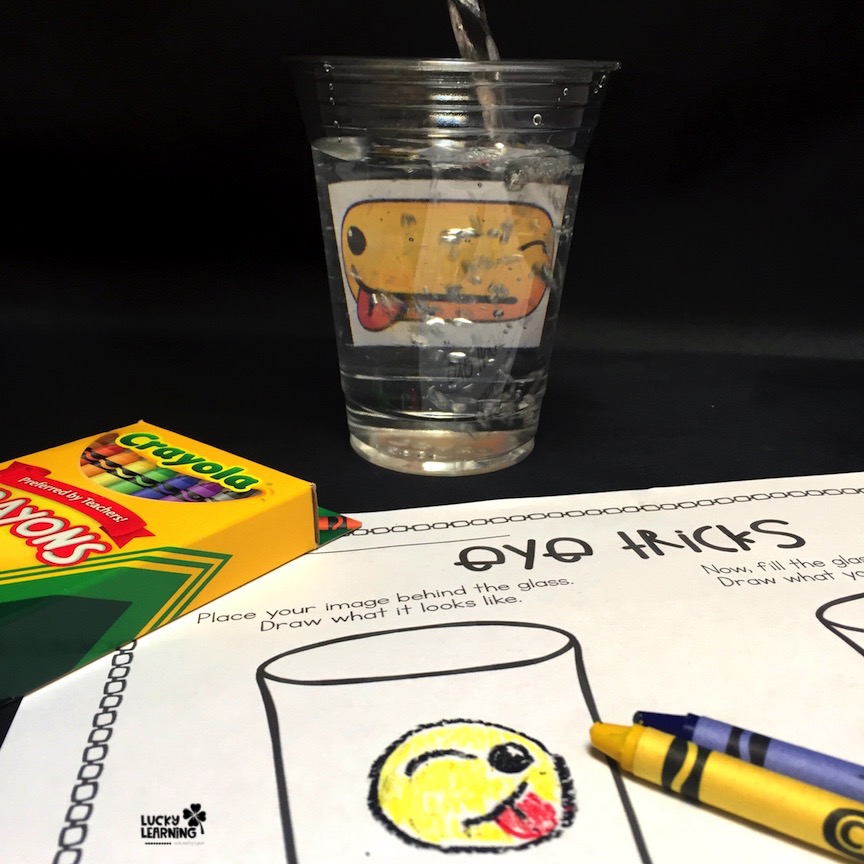
Communication Experiments
Of course, communication is also a scientific concept that combines sound and light. I love these fun, easy science experiments to use with K-2 kids!
String and Cup Telephone
Not only does the old-school telephone experiment incorporate sound and communication; it’s also an engineering challenge! Your kids make a telephone using string and cups then see how sound travels to communicate with one another.
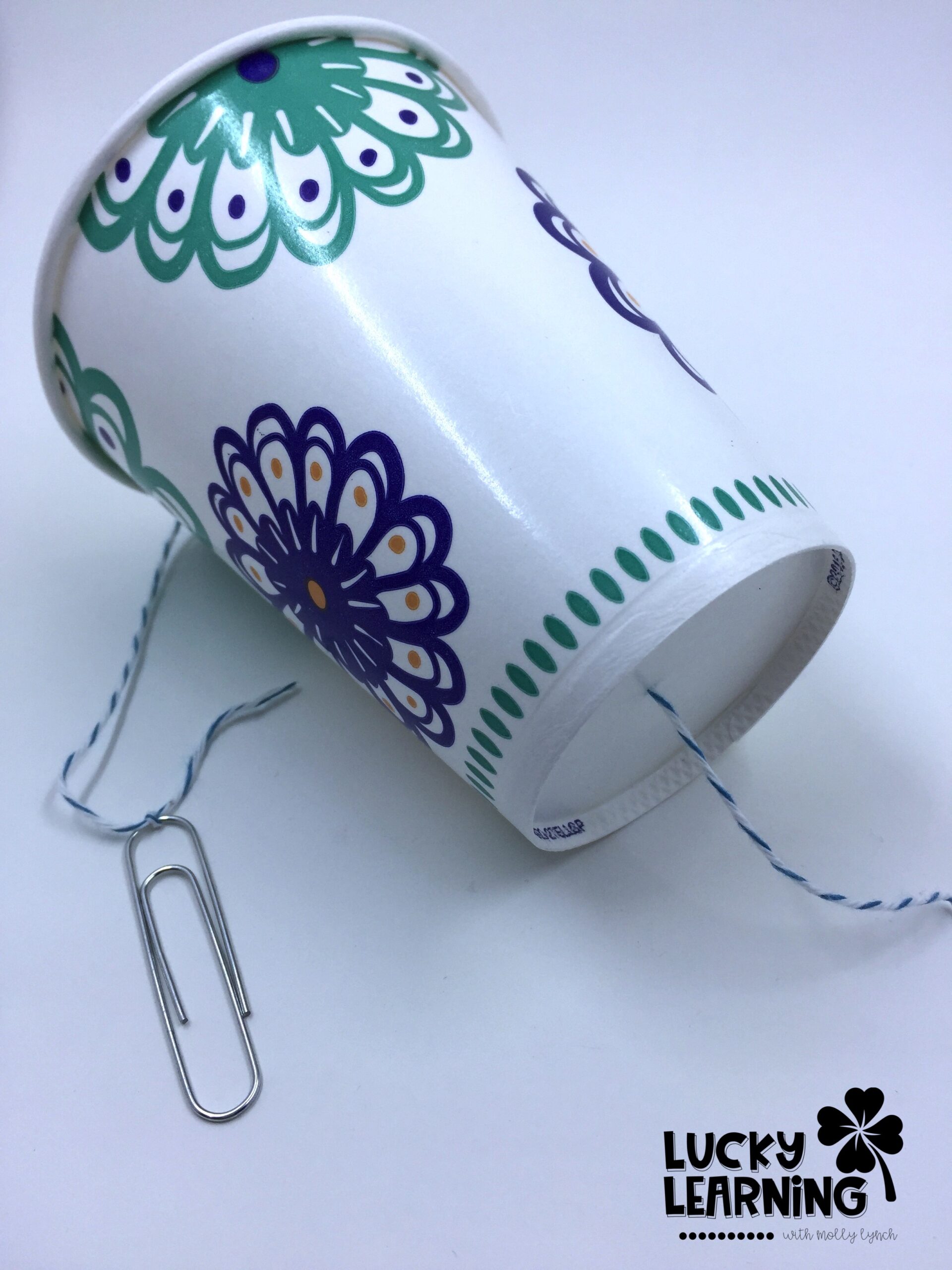
Silent Communication Challenge
Next, this challenge helps your students communicate with a friend without speaking. {Sometimes this is a nice break for a noisy classroom!} They can use light signals or other gestures. Overall, it’s a great way to teach communication and let kids be creative. I love to model my own silent communication with silent attention-getting signals.
Easy science experiments don’t mean the same old boring ideas. In fact, these easy sound, light, and communication science experiments connect to 1st Grade Next Generation Science Standards and are ready for you to use in your classroom! Try a few to teach sound, light, and communication in your science class this year.
